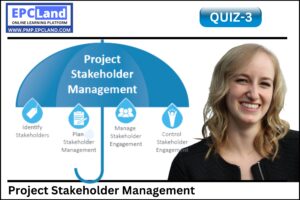1.
Take a look at this table of risks. If these are the only risks on the project, calculate the total EMV.
2.
Take a look at this table of risks. The latest weather report came out, and there is now a 20% chance of unseasonably warm weather. What’s the new EMV for the project?
3.
Read following scenario and identify which tool or technique is being used. You’ve reviewed your estimates and find that you had assumed that seasonal weather patterns would hold. If they change, then it could cause serious problems with the project.
4.
Take a look at this table of risks. Calculate the EMV for each of these three risks.
5.
Which risk response technique is being used in these situations? Match each technique to its scenario. You hear that it’s going to rain for the first three days of your trip, so you bring waterproof tents and indoor projects for the team to work on in the meantime.
6.
Which risk response technique is being used in these situations? Match each technique to its scenario. If the weather’s good, then there’s a chance you could see a meteor shower. If the team gets a photo that wins the meteor photo contest, you can get extra funding. You have your team stay up all night with their telescopes and cameras ready.
7.
Read following scenario and identify which tool or technique is being used. You’ve identified a risk that is very complex, so you try to find out what made it happen. You use an Ishikawa diagram to gain insight into it.
8.
Take a look at this table of risks. Now the cost of replacement rations goes up to $150. What’s the new EMV for the project?
9.
Which risk response technique is being used in these situations? Match each technique to its scenario. You read that there’s a major bear problem in the spring on the cliff where you are planning to work. You change your project start date to happen in the fall.
10.
Which risk response technique is being used in these situations? Match each technique to its scenario. On your way up the cliff, you meet another team that is looking to survey the area. You offer to do half of the surveying work while they do the other half and then trade your findings with each other.

































